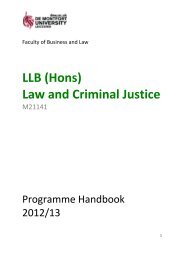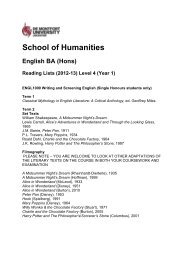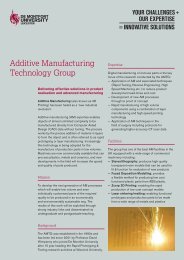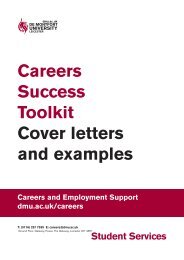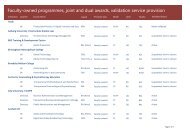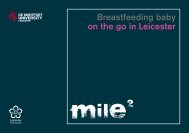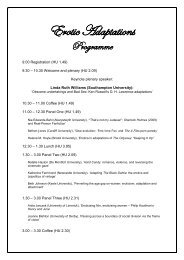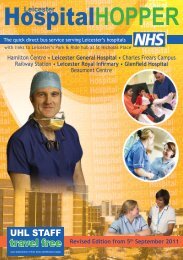Evaluation of the Crash Course March 2009 - De Montfort University
Evaluation of the Crash Course March 2009 - De Montfort University
Evaluation of the Crash Course March 2009 - De Montfort University
Create successful ePaper yourself
Turn your PDF publications into a flip-book with our unique Google optimized e-Paper software.
• There was evidence <strong>of</strong> some increases in knowledge about risky behaviour<br />
in relating to cars, whe<strong>the</strong>r as driver or as passenger. Those who had<br />
attended <strong>the</strong> course were better able to <strong>of</strong>fer three major causes <strong>of</strong> death or<br />
serious injury in road collisions at a statistically significant level.<br />
• There was some evidence <strong>of</strong> shifts in attitudes towards risky behaviours.<br />
Significantly more young people felt it was acceptable and “OK” always to<br />
wear a seat belt after <strong>the</strong>y had experienced <strong>the</strong> course. A significantly higher<br />
number <strong>of</strong> <strong>the</strong> young people now felt able after <strong>the</strong> course to ask a driver who<br />
had had too much to drink to stop.<br />
• Self-reported behaviour over <strong>the</strong> last month was significantly better in <strong>the</strong><br />
group that had experienced <strong>the</strong> course than for those who had not in two<br />
respects. Those who had attended <strong>the</strong> course reported that <strong>the</strong>y had “messed<br />
about” in a car less <strong>of</strong>ten, indicating a greater awareness <strong>of</strong> <strong>the</strong> dangers <strong>of</strong><br />
driver distraction. They had also more frequently been scared about <strong>the</strong><br />
driving, indicating a greater sensitivity to driving risks.<br />
• The free text comments give some picture <strong>of</strong> future intended behaviour. 409<br />
young people responded to this question <strong>of</strong> whom some 253 (over 60%) were<br />
resolved to use <strong>the</strong>ir seat belts and 69 (over 16%) were determined not to<br />
distract a driver in future. O<strong>the</strong>r intended behaviour covered <strong>the</strong> range <strong>of</strong> safe<br />
practices recommended during <strong>the</strong> course.<br />
This evidence tends to be fur<strong>the</strong>r confirmed by <strong>the</strong> evidence from <strong>the</strong> focus<br />
groups with young people and <strong>the</strong> interviews with stakeholders described in <strong>the</strong><br />
next two sections.<br />
Concerns however must remain. The course cannot be expected to transform<br />
entrenched attitudes or risk taking and <strong>the</strong> evidence shows that <strong>the</strong> some <strong>of</strong> <strong>the</strong><br />
young people are prepared to admit to both behaviour and attitudes that reflect a<br />
considerable willingness to put <strong>the</strong>mselves at risk. It appears that young men are<br />
more difficult to convince and have more risk inclined attitudes than young<br />
women. The evidence also shows that in general young people attending<br />
educational provision in <strong>the</strong> most deprived wards are also more inclined to take<br />
risks. These issues will be a continuing challenge for <strong>the</strong> course and for<br />
approaches to road safety promotion more widely.<br />
42





